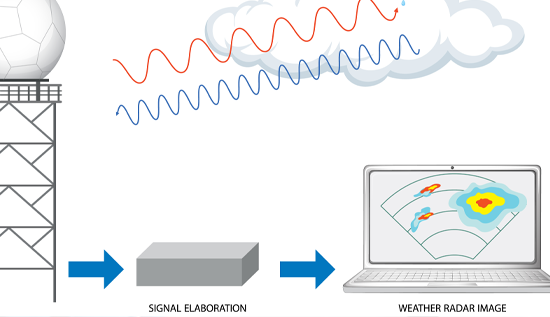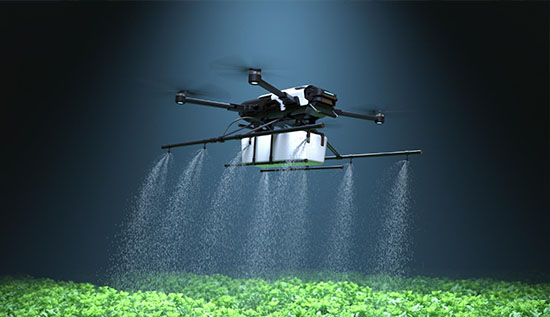Ultra-Low Latency Networks for VR/AR: Optimized Performance

🚀 Discover how Ultra-Low Latency Networks for VR/AR are transforming real-time experiences with 5G, edge computing, and seamless data transmission.
The future of immersive technology depends on Ultra-Low Latency Networks for VR/AR. As virtual and augmented reality applications evolve beyond entertainment and into education, healthcare, and industrial use, network performance becomes a critical factor. The slightest delay or lag can disrupt immersion, induce motion sickness, and degrade user experience. Therefore, achieving low latency, high bandwidth, and consistent data flow is fundamental to optimizing VR/AR performance.
In this article, we explore the technologies driving low-latency networking for virtual reality, high-speed networks for augmented reality, and the role of edge computing for VR/AR. We also examine real-time data transmission techniques for VR/AR, the contribution of 5G low-latency networks, and strategies for reducing network lag in cloud-based VR/AR platforms. By the end, you’ll understand how to achieve ultra-low latency in VR and AR networks through architectural, software, and infrastructure optimization.
The Importance of Ultra-Low Latency in VR/AR
Latency refers to the time delay between a user’s action—such as turning their head, moving a controller, or interacting with a virtual object—and the corresponding system response that updates the virtual or augmented environment. In VR/AR environments, this delay must be virtually imperceptible to maintain a sense of realism and natural interaction. Even the slightest lag can disrupt the feeling of presence that immersive technologies strive to create.
Research in human perception has shown that motion delays greater than 20 milliseconds are easily noticeable to users. Once latency exceeds this threshold, the experience can quickly become uncomfortable, leading to disorientation, nausea, or motion sickness—issues that are especially common in poorly optimized VR applications. To combat this, Ultra-Low Latency Networks for VR/AR are designed to achieve end-to-end latencies below 10 milliseconds, creating the illusion of instantaneous interaction between the physical and virtual worlds.
Such responsiveness enables seamless synchronization between a user’s physical movements and the corresponding visual, auditory, and haptic feedback within the immersive environment. This is crucial not only for entertainment and gaming but also for professional and industrial applications like virtual training, simulation, and remote operations.
Key Impacts of Latency on Immersive Experiences
· Visual Mismatch: Even a 15-millisecond delay can cause a noticeable lag between head motion and the update of the corresponding visual frame. This visual inconsistency breaks immersion and can cause dizziness or motion discomfort.
· Audio-Visual Synchronization: Audio lag creates a disconnect between sound and movement, destroying the illusion of realism. This is particularly critical in augmented reality applications that rely on spatial audio cues to provide situational awareness.
· Multi-User Coordination: In collaborative VR environments, such as shared virtual workspaces or multiplayer experiences, latency can cause users’ actions to appear delayed or misaligned, making coordination difficult and reducing engagement.
· Haptic Feedback Delays: Real-time tactile responses are essential for virtual reality simulations used in fields like medicine, engineering, and defense. Any delay between user interaction and haptic feedback reduces accuracy and realism in these critical applications.
By implementing low-latency networking for virtual reality, developers can ensure that every sensory cue—visual, auditory, and tactile—is precisely timed. This synchronization forms the foundation of truly believable and comfortable immersion. The combination of edge computing for VR/AR, 5G low-latency networks, and real-time data transmission techniques plays a central role in achieving these ultra-responsive experiences, setting the stage for the next generation of interactive digital reality.
High-Speed Networks for Augmented Reality
While virtual reality (VR) immerses users entirely in a computer-generated world, augmented reality (AR) enhances the real world by overlaying digital information, graphics, and data onto the user’s physical surroundings. Because of this continuous interaction between the real and virtual environments, high-speed networks for augmented reality must meet even stricter real-time performance requirements than traditional VR systems. Any delay or mismatch between the real-world motion and digital overlay can instantly disrupt the experience, leading to inaccuracies or even operational risks in professional environments.
In AR applications, the network must support constant environmental tracking, rapid sensor data processing, and instantaneous data delivery. Tasks such as object recognition, spatial mapping, and 3D rendering demand an uninterrupted flow of information between devices, edge servers, and cloud infrastructure. For example, AR-assisted surgery, navigation systems, or industrial manufacturing applications rely on seamless and low-latency networking for virtual reality and augmented reality to ensure precise alignment between the physical and digital worlds.
To achieve this level of responsiveness, the system must adhere to three fundamental principles:
· Local Data Processing: Data must be captured, transmitted, and processed as close to the user as possible to minimize latency. Deploying local edge servers allows for instantaneous data computation and feedback, ensuring overlays remain perfectly synchronized with real-world movements.
· Integration of 5G Low-Latency Networks and Edge Computing: The combination of 5G low-latency networks and edge computing to reduce latency in virtual reality and AR systems is a game-changer. 5G provides lightning-fast wireless transmission with sub-1 millisecond delays, while edge computing processes data regionally, drastically reducing round-trip communication time.
· Efficient Handling of Sensor and Render Data: AR devices must simultaneously process upstream sensor data (like camera feeds, GPS, or LiDAR input) and downstream render data (like holographic overlays or annotations). Optimizing these dual data streams is vital for maintaining real-time responsiveness and high-quality visualization.
In industrial and manufacturing settings, AR headsets equipped with object recognition and machine vision technologies identify equipment components and display contextual information to technicians in real time. To achieve this, networks must maintain sub-20 millisecond round-trip latency to ensure overlays are positioned with millimeter-level accuracy. Even minor delays can cause digital annotations or 3D models to drift or misalign with the physical object, compromising both performance and safety.
Without effective VR/AR network optimization, these AR overlays become unreliable, rendering the system ineffective for critical use cases such as assembly-line guidance, remote assistance, or precision-based maintenance. Conversely, by leveraging high-speed networks for augmented reality, supported by edge computing for VR/AR and real-time data transmission techniques, organizations can create robust, reliable AR ecosystems capable of supporting enterprise-grade applications with surgical precision and near-zero latency.
Ultimately, Ultra-Low Latency Networks for VR/AR form the backbone of next-generation AR deployments. They bridge the gap between the physical and digital worlds, enabling instant feedback, flawless motion tracking, and dynamic interaction — key elements driving the evolution of augmented reality from a novelty technology to an indispensable industrial and professional tool.
Understanding Real-Time Data Transmission in VR/AR
Real-time data transmission VR/AR involves continuously streaming massive amounts of visual and sensory information. A single 4K VR frame can exceed 50 MB, and at 90 frames per second, that’s over 4.5 GB per second of uncompressed data.
To handle this:
- Compression and encoding techniques are essential.
- Predictive streaming algorithms anticipate user movement to pre-load frames.
- Real-time data transmission techniques for VR/AR leverage protocols such as UDP and QUIC instead of TCP to minimize retransmission delays.
However, raw transmission speed isn’t enough. VR/AR network optimization must also manage packet prioritization, jitter correction, and bandwidth allocation dynamically to maintain consistent performance under fluctuating network conditions.
The Role of Edge Computing for VR/AR
Centralized cloud computing introduces unavoidable latency due to long transmission paths. Edge computing for VR/AR mitigates this by processing data near the user — at the network’s edge.
Benefits of Edge Computing in Immersive Technologies:
- Reduced Transmission Distance: By processing frames or physics simulations on edge servers, latency is cut dramatically.
- Offloading Heavy Computation: Mobile and wearable devices can be lighter, as most computation happens at the edge.
- Real-Time Synchronization: Edge nodes can synchronize multi-user sessions regionally before connecting to the cloud backbone.
In cloud-based VR, edge computing to reduce latency in virtual reality is the most effective strategy for minimizing response delays. Combined with 5G low-latency networks, this creates a hybrid architecture where edge servers handle real-time workloads while cloud servers manage persistent data.
5G Low-Latency Networks and Their Impact on VR/AR
5G low-latency networks are designed with immersive technologies in mind. They offer:
- Sub-1 ms air interface latency
- Gigabit bandwidth
- Network slicing for application-specific quality of service (QoS)
This makes 5G an ideal enabler for Ultra-Low Latency Networks for VR/AR. By combining edge computing for VR/AR with 5G infrastructure, operators can deliver near-instantaneous feedback loops, allowing untethered devices to perform on par with wired systems.
Example Use Cases
- Cloud VR Gaming: Streaming 3D environments from the edge using 5G eliminates the need for expensive local hardware.
- AR Navigation Systems: Real-time location and visual updates for autonomous vehicles or pedestrians.
- Remote Industrial Training: Workers can interact with real-time simulations streamed over high-speed networks for augmented reality.
The combination of 5G and edge computing is the blueprint for how to achieve ultra-low latency in VR and AR networks.
Techniques for Achieving Ultra-Low Latency in VR/AR Networks
The journey toward ultra-low latency networks for VR/AR involves optimization across multiple layers:
Network Architecture
- Deploy edge nodes close to the user base.
- Use software-defined networking (SDN) to manage routes dynamically.
- Implement network slicing for VR/AR traffic prioritization.
Data Encoding and Compression
- Use advanced codecs such as H.266/VVC for real-time data transmission VR/AR.
- Apply foveated rendering, sending high-resolution data only where the user is looking.
Predictive Modeling
- Predict head and body motion using machine learning to pre-render frames.
- Use AI-based network prediction to anticipate congestion and reroute data.
Synchronization and Caching
- Store frequently accessed VR/AR assets at the edge.
- Synchronize multiple edge nodes using distributed clocks.
By applying these strategies, organizations can master how to achieve ultra-low latency in VR and AR networks and ensure flawless experiences.
Reducing Network Lag in Cloud-Based VR/AR Platforms
Cloud-based immersive experiences face challenges such as unpredictable jitter, packet loss, and dynamic bandwidth fluctuations. To maintain smooth rendering and input response, developers must employ advanced VR/AR network optimization strategies.
Methods for Reducing Lag:
- Adaptive Bitrate Streaming (ABR): Adjusts video quality based on real-time bandwidth.
- Parallel Data Channels: Splits control and sensory data into separate low-latency paths.
- Edge Offloading: Uses edge computing to reduce latency in virtual reality by relocating compute-heavy rendering closer to users.
Through intelligent buffering, proactive packet management, and real-time data transmission techniques for VR/AR, modern cloud platforms can cut latency from hundreds of milliseconds to under 20 ms — a game-changer for virtual collaboration and remote simulation.
VR/AR Network Optimization Strategies
VR/AR network optimization is both an art and a science. It encompasses routing efficiency, data prioritization, and latency management.
Best Practices:
- Traffic Prioritization: Allocate network resources dynamically for time-sensitive packets.
- Hybrid Cloud-Edge Models: Combine cloud scalability with edge immediacy.
- Latency Monitoring: Use continuous performance analytics to adjust routes and resources.
In enterprises, implementing low-latency networking for virtual reality ensures reliable performance across distributed teams. Meanwhile, high-speed networks for augmented reality power real-time data overlays in manufacturing, logistics, and maintenance operations.
Real-World Applications of Ultra-Low Latency VR/AR Networks
Healthcare
Surgeons use AR overlays for guidance, where delays can mean life or death. Ultra-Low Latency Networks for VR/AR enable robotic-assisted surgery and telemedicine with sub-10 ms responsiveness.
Education and Training
Immersive classrooms powered by 5G low-latency networks provide interactive, hands-on learning. Students can perform virtual chemistry experiments or operate digital machinery in real time.
Manufacturing and Industry 4.0
AR headsets display schematics and instructions directly onto machinery. Edge computing for VR/AR ensures those visuals update instantly as equipment status changes.
Entertainment and Gaming
In cloud gaming and VR arcades, reducing network lag in cloud-based VR/AR platforms enhances player engagement and prevents motion-induced discomfort.
Future of Ultra-Low Latency Networking
The future of Ultra-Low Latency Networks for VR/AR lies in the convergence of multiple technologies:
- 6G Networks: Expected to deliver sub-millisecond round-trip times.
- Quantum Networking: Promises instantaneous data synchronization.
- AI-Powered Network Management: Enables self-optimizing systems that adapt in real time.
With continuous improvements in real-time data transmission techniques for VR/AR, latency will soon approach the limits of human perception — paving the way for full sensory immersion and the metaverse.
Conclusion
The path to true immersion in virtual and augmented reality depends on mastering latency. Through the integration of 5G low-latency networks, edge computing for VR/AR, and advanced real-time data transmission VR/AR strategies, developers can achieve unprecedented responsiveness.
By understanding how to achieve ultra-low latency in VR and AR networks, leveraging VR/AR network optimization, and implementing edge computing to reduce latency in virtual reality, industries can unlock the full potential of immersive technology. From gaming to healthcare, the impact of high-speed networks for augmented reality and low-latency networking for virtual reality will redefine how humans interact with digital content.
As we move toward the next frontier of connectivity, Ultra-Low Latency Networks for VR/AR will serve as the backbone of the metaverse — connecting people, data, and experiences in real time, with no perceptible lag, and infinite possibilities.
More Articles
 19 Nov 2025
19 Nov 2025
Swarm Robotics in Agriculture & Logistics: Smart Automation
Swarm Robotics in Agriculture & Logistics enhances automation, efficiency, and smart coordination across modern farming and logistics operations.
 18 Nov 2025
18 Nov 2025
DAO Governance Trends: Evolving Models & Best Practices
Thorough analysis of DAO Governance Trends highlighting upgraded governance systems and evolving models shaping decentralized organizations today.
 18 Nov 2025
18 Nov 2025
Brain-Computer Interfaces (BCI): Latest Technology Trends
Keep ahead with the latest developments in Brain-Computer Interfaces (BCI), from wearable neurotechnology to AI-enhanced device control and robotics.
 17 Nov 2025
17 Nov 2025
Digital Identity Solutions: Secure Transactions Online
Experience safer digital banking through biometric identity verification and multi-factor authentication solutions.